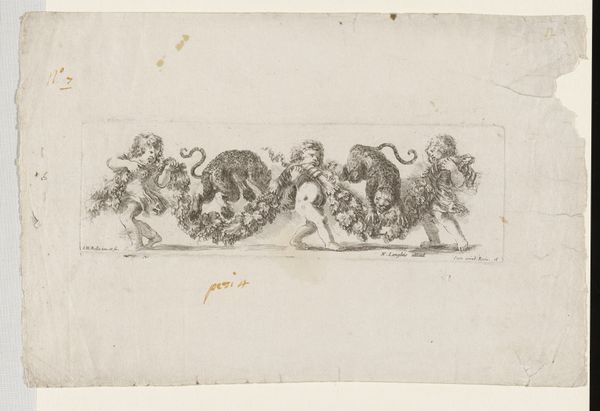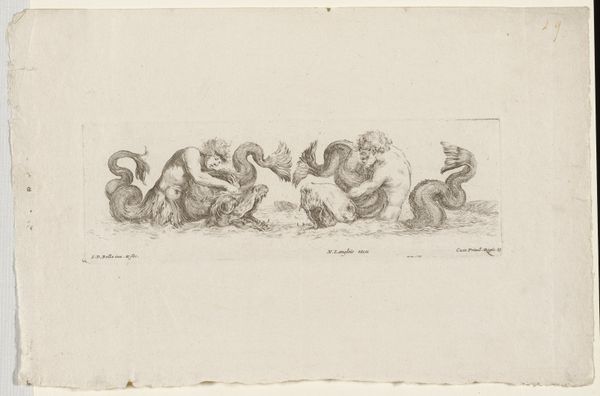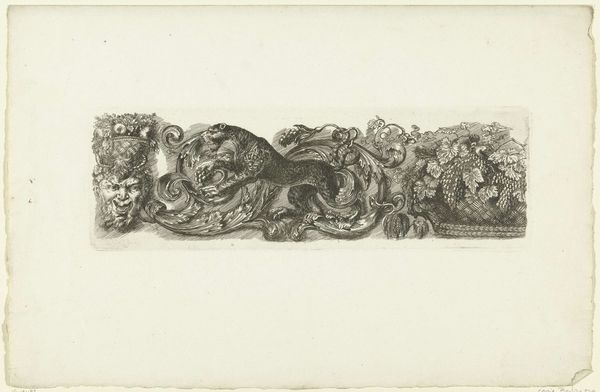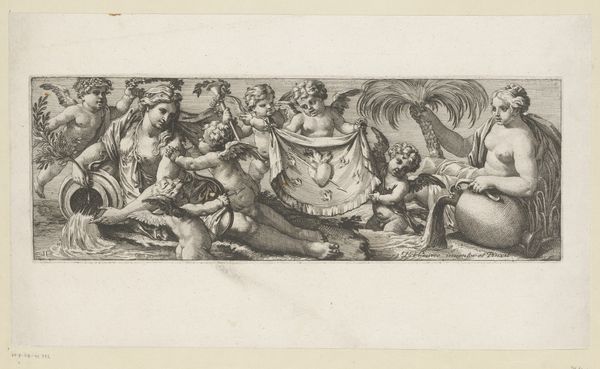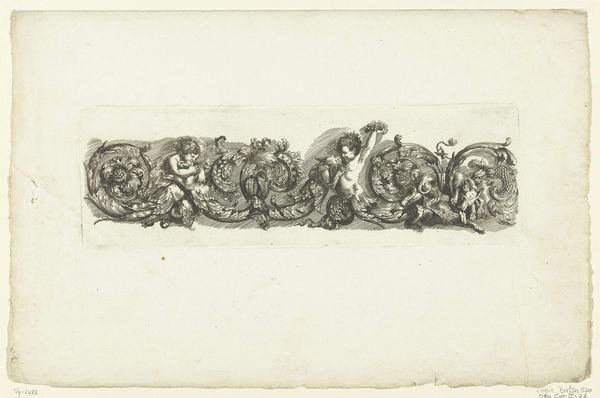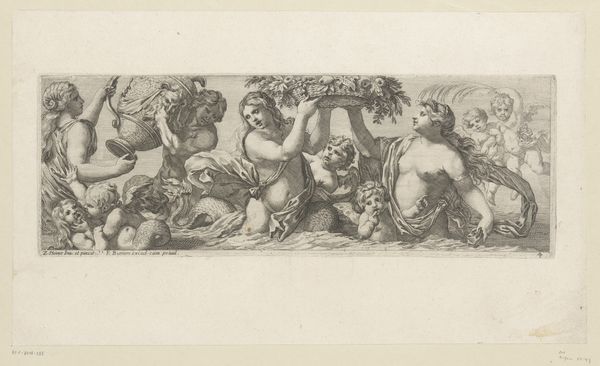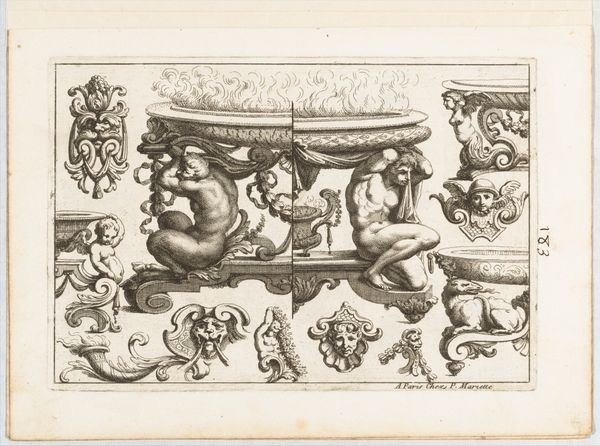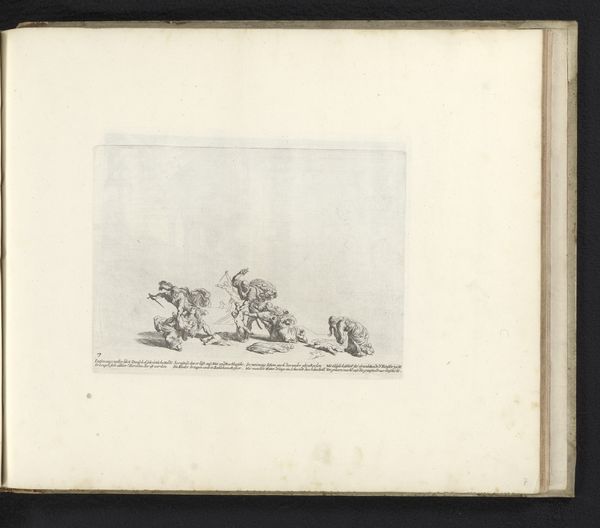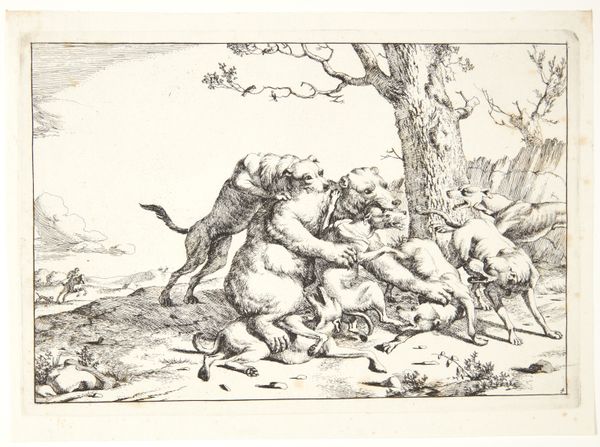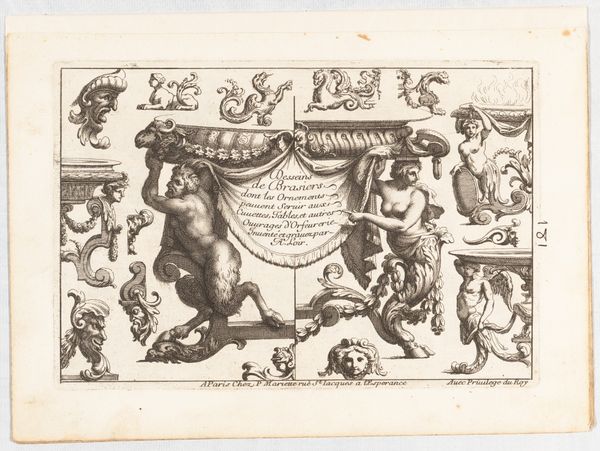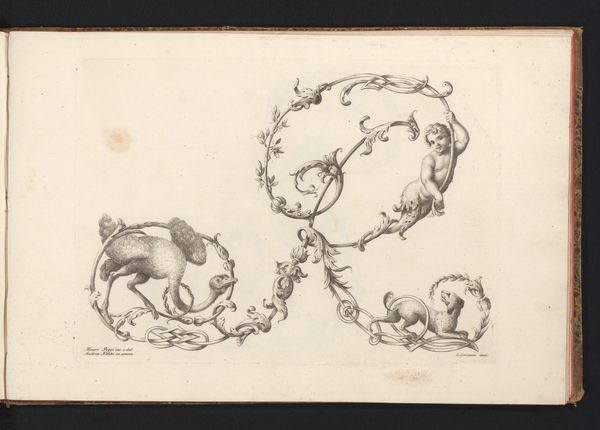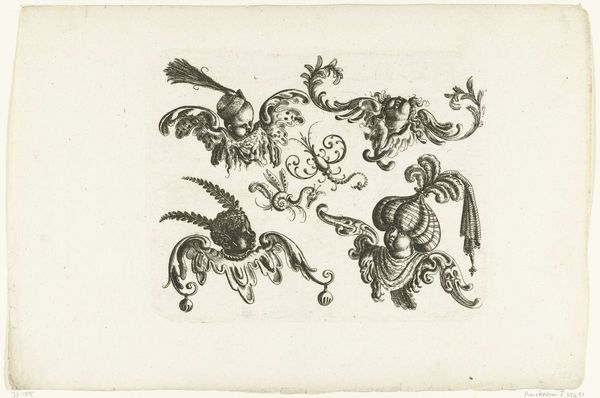
print, engraving
#
baroque
# print
#
genre-painting
#
engraving
Dimensions: height 80 mm, width 246 mm
Copyright: Rijks Museum: Open Domain
Editor: This is "Fries met drie putti en twee luipaarden," an engraving by Franz Ertinger from before 1678, housed in the Rijksmuseum. The image features cherubic figures with two imposing leopards. The composition's contrast and balance create a compelling effect. How do you approach interpreting this print? Curator: Intriguing piece! Let’s start with its structural components. Notice the horizontal frieze format. What does that linearity do to your reading of the image? Does it, for instance, reinforce a sense of processional movement? Observe the positioning of the figures. The putti frame the leopards creating symmetrical intervals. Editor: Yes, the mirrored layout is striking! The rhythmic spacing really catches the eye. The diagonals implied by the leaping leopards contrast nicely with the verticality of the cherubs and horizontal baseline, am I on the right track? Curator: Precisely! Now, look at the materiality. The fine lines of the engraving, consider how they work to define texture and form. The delicate rendering of the cherubs contrasts with the more densely hatched areas depicting the leopards, providing textural variation across the surface. Think how Ertinger wants you to scan this. Editor: So the strategic use of line weight and density is not just descriptive, but also directs our gaze and constructs meaning? Curator: Exactly. The engraving process itself, with its capacity for detailed and repeatable imagery, contributes to the work’s overall formal qualities, lending itself to patterns, a series of contrasts in form that engage our attention to keep viewers interested. Now tell me your impressions regarding form versus narrative? Editor: I see now! Thanks for clarifying the balance between the symbolism and pure formalism. It is not just decoration. The whole design invites a viewer into playful analysis and close inspection. Curator: Glad I could share insight into what you could use in semiotics to dissect any other patterns found in composition, colour, shapes, texture, forms. These are core tools for studying any work that may draw your interest.
Comments
No comments
Be the first to comment and join the conversation on the ultimate creative platform.
